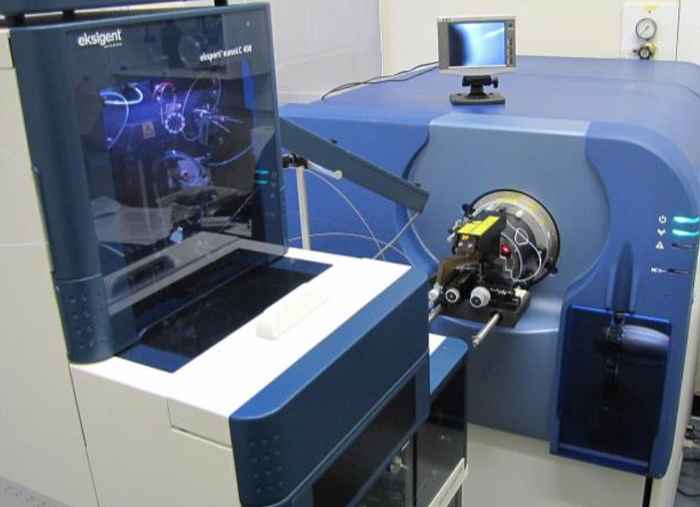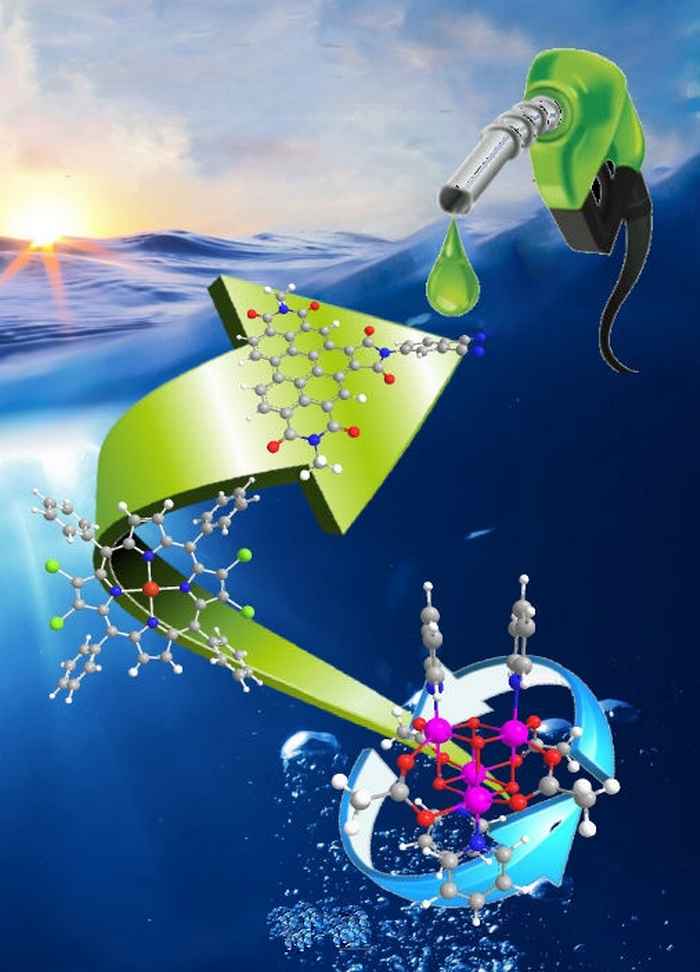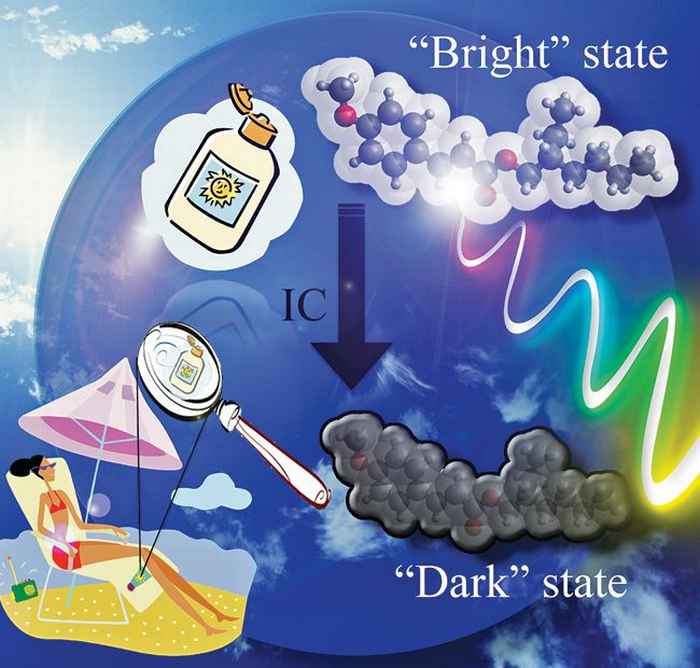Business opportunities
- New material for enriching phosphorylated proteins
- New cobalt catalyst for synthesis of methanol from CO2
- Innovative solvent switching & focusing interface for LC & LC-MS
- New photosensitizer for light driven water oxidation
- New cobalt catalyst to reduce broad scope of biomass derived chemicals
- More effective sunscreens
New material for enriching phosphorylated proteins

HIMS researchers in the field of Biomolecular Systems Analysis have developed a new material that allows enrichment of phosphorylated peptides in analysis of biomolecular samples, showing results that are beyond the scope of current state-of-the-art technologies or methods. The solution which has been developed is scalable, and in principal should allow for lab-on-a-chip solutions.
The material developed is a porous nitrogen-doped carbon with an open porous network of micropores, mesopores and macropores. This hierarchical structure combines the advantages of a large surface area with excellent accessibility. The nitrogen doping creates local charges on the carbon surface, enhancing the retention of the phosphorylated proteins or peptides.
Proof of concept has been obtained by using a first working prototype assembled using standard commercially available components.
HIMS is looking for partnership with companies willing to further develop the technology for enriching phosphorylated proteins and implement it in a commercial instrument. There is still room for optimization, and the HIMS research team can support the further development.
New cobalt catalyst for synthesis of methanol from CO2

HIMS researchers of the UvA Research Priority Area Sustainable Chemistry have developed a catalyst that can reduce carboxylic acids and esters to alcohols. The homogeneous catalyst, made of cobalt paired with a tridentate phosphine ligand, can convert a broad scope of substrates. Contrary to current technologies it operates under mild conditions (100 °C, 80 bar H2) and reaches great selectivity and high turnover rates. Other similar homogeneous catalysts require a ruthenium or iridium core, which are scarce and more expensive metals. This cobalt catalyst is thus more efficient and more sustainable.
Methanol could be synthesized entirely sustainable using this catalyst, by taking CO2 from the industry and producing H2 from H2O while taking your energyfrom a renewable energy source. The methanol can be used as a feedstock to produce various other products, or to store hydrogen. By dehydrogenating the methanol it will be possible to recover the H2. In this way the methanol is used as an easily transportable carrier for H2.
HIMS is looking for a partnership with companies who want to make their process more sustainable. We already collaborate with many research groups across the globe to improve their performance while reducing their carbon footprint.
Innovative solvent switching & focusing interface for LC & LC-MS
Comprehensive two-dimensional liquid chromatography (LCxLC) is increasingly important for the separation of complex samples. There is a need to combine orthogonal LC systems and to efficiently handle solvent incompatibility. Researchers of the Analytical Chemistry group at HIMS have developed a solvent switching and focusing technology for LC and LC-MS referred to as Reflectron Modulation Interface (ReMI). ReMI changes sample solvent, removes salts and buffers, and focuses analyte bands, increasing concentrations and enhancing detector sensitivity.
ReMI enhances compatibility of LC with MS and enables the elucidation of the structure of proteins and peptides in salty solutions. The technology has been proven in a prototype interface for solvent switching and focusing. Demonstrated applications include proteins and peptides, detergents, food contaminants and health-promoting constituents) and polymers.
HIMS is interested in offering the finding to partners, as a stand-alone solvent switching device or as an integrated part of existing LC or mass spectrometry set-ups.
New photosensitizer for light driven water oxidation

Researchers from the Molecular Photonics group at HIMS have developed a new light sensitive metallo-porphyrin photosensitizer that is more photostable than current poly(bipyridine) ruthenium complexes (e.g. Ru(bpy)32+) and uses abundantly available, cheap metals. It shows intense absorption of visible light, extending the absorption wavelength for performing light-driven water-oxidation to 600 nm (a performance comparable to that of the inorganic semiconductor photocatalyst Ta3N3.)
The new metallo-porphyrin shows a robust photosensitizer performance in light driven water oxidation and can activate a wide range of (water-oxidation) catalysts. It meets all the requirements for commercial fabrication of an artificial leaf: simple procedure, high synthesis yield and good availability of all materials used. This is the first step to the future of light-driven artificial photosynthesis for biofuel production for transport, chemical feedstock and electricity generation.
HIMS is looking for a partner to further develop this first step towards a complete system.
New cobalt catalyst to reduce broad scope of biomass derived chemicals
HIMS researchers of the UvA Research Priority Area Sustainable Chemistry have developed a catalyst that can reduce carboxylic acids and esters to alcohols. The homogeneous catalyst, made of cobalt paired with a tridentate phosphine ligand, can convert a broad scope of substrates. Contrary to current technologies it operates under mild conditions (100 °C, 80 bar H2) and reaches great selectivity and high turnover rates. Other similar homogeneous catalysts require a ruthenium or iridium core, which are scarce and more expensive metals. This cobalt catalyst is thus more efficient and more sustainable.
Many of the top-12 biobased chemicals contain carboxylic acids. This catalyst can convert these biobased chemicals to other useful chemicals used in different kind of markets. For instance good yields have been established for the conversion of turning succinic acid into 1,4-butanediol and tetrahydrofuran. Also for levulinic acid good yields are reported.
HIMS is looking for a partnership with companies who want to make their process more sustainable. We already collaborate with many research groups across the globe to improve their performance while reducing their carbon footprint.
More effective sunscreens

By studying the excited-state properties of regularly used sunscreen agents, researchers from the Molecular Photonics group at HIMS have recently revealed that one of the commonly used protective ingredients in sunscreens (the octylmethoxycinnamate (OMC) molecule) reacts differently to UV radiation than previously assumed. As a result, the efficacy of the sunscreen is reduced and light-induced harmful side effects may occur.
Currently an extensive research program is established to determine how the photoactive compounds of various commercially employed sunscreen agents dissipate the energy of UV photons. This can pave the way for a potentially game-changing approach for the rational development of sunscreens.
HIMS is looking for partners to participate in this development of more effective sunscreens with improved photoprotective and non-toxic properties.